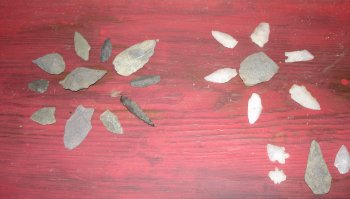History:
Indian Settlement
Five Springs
|
Return to Five Springs Home Page
Indian Settlement & Swedish Settlement
Indian Settlement
|
Native Americans called the area "The Place of Five Springs" and many arrowheads have been found in the fields. ["Living on the Henry A. Body Farm," Prepared by John Body for Boyertown Historical Society tour of homes (June 27. 1982)]. The Delaware or Lenape Indians had long lived in the area. Their villages were aligned along the tributary streams that fed the Schuykill and Delaware Rivers. The villages moved as resources were depleted. The Lenape continued to live among the European settlers for some time. By 1730 they appeared to be confined to approximately 800 acres in Oley which otherwise remained unclaimed. [Pendleton, Philip, E., Oley Valley Heritage. The Colonial Years: 1770-1775, (1994), pp.25-26]. |
 |
Swedish Settlement
Amity Township, originally known as "Swede's Tract," was in 1701 a 10,000 acre grant from William Penn to the Swedish settlers that ran along the Schuylkill River and approximately ten miles to the north. The individual grants were laid out in long strips each bordering on the Schuylkill and running north to the border of present day Oley Township. [Montgomery, Morton L., History of Berks County in Pennsylvania (1886), p. 944]. Few of the Swedes settled there and many sold their land to English or German settlers. The current Rhoads-Lorah-Body-Goldfarb property became part of the property of English settler John Campbell. The Estate of John Campbell is listed as owning the property in 1725. [Pendleton, Philip, E., Oley Valley Heritage. The Colonial Years: 1770-1775, (1994), App. 9, pp. 189-190].
This document maintained by David Goldfarb.